40 45′ 26.86″N I 73 57’36.15″ W
2016, music/sound: jens lohwieser & marcus kaiser
hd 2.11 min, loop
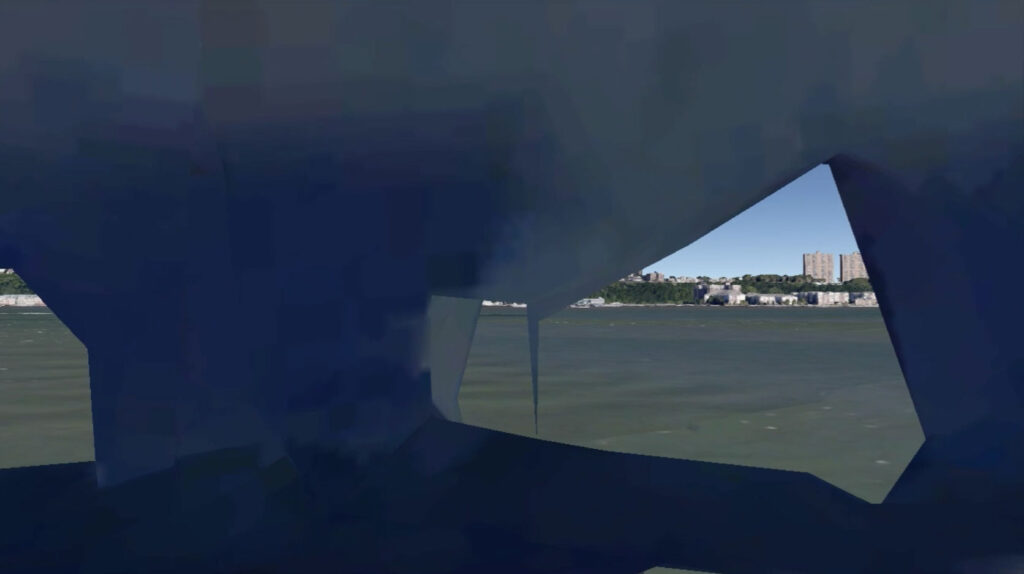
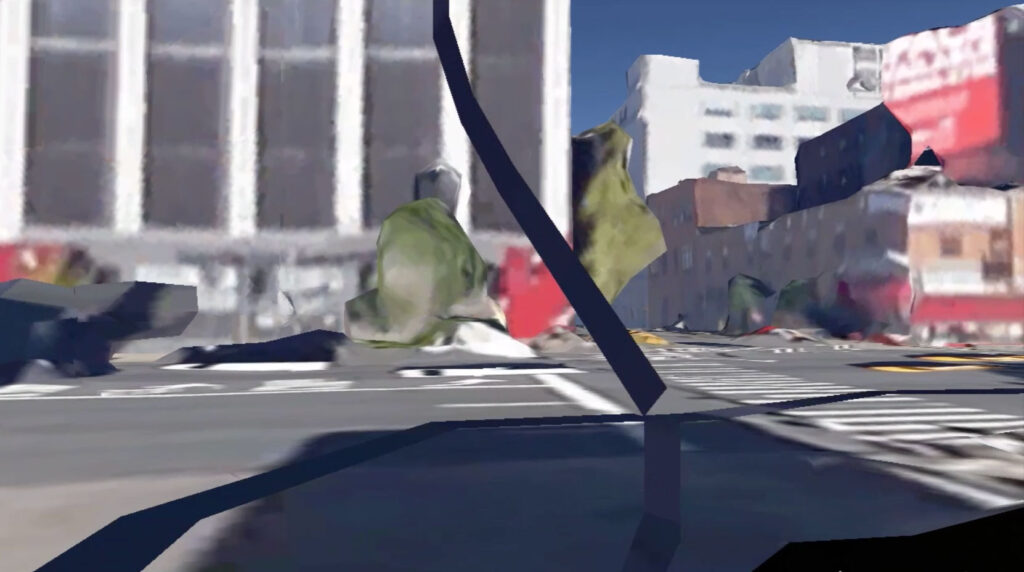
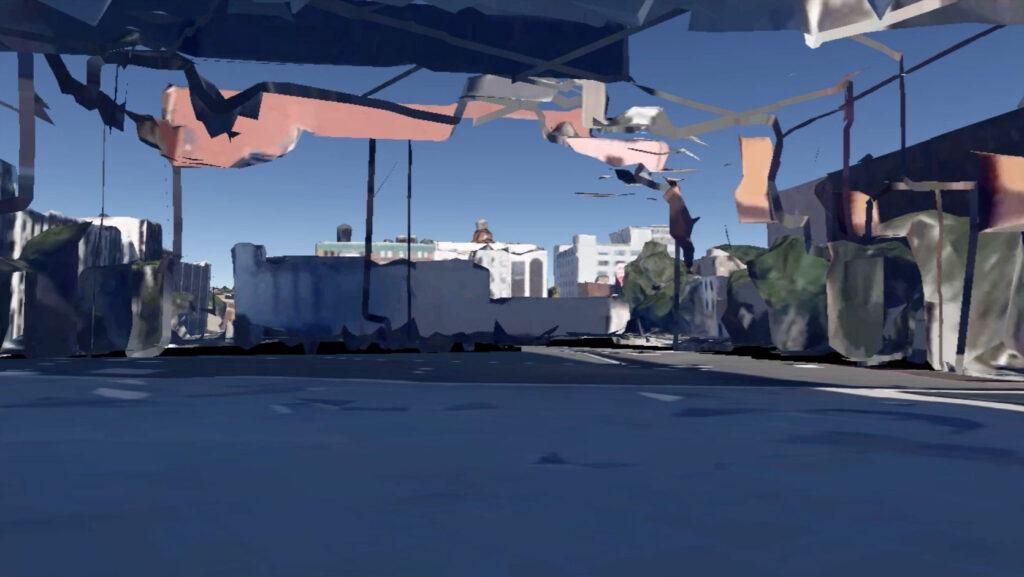
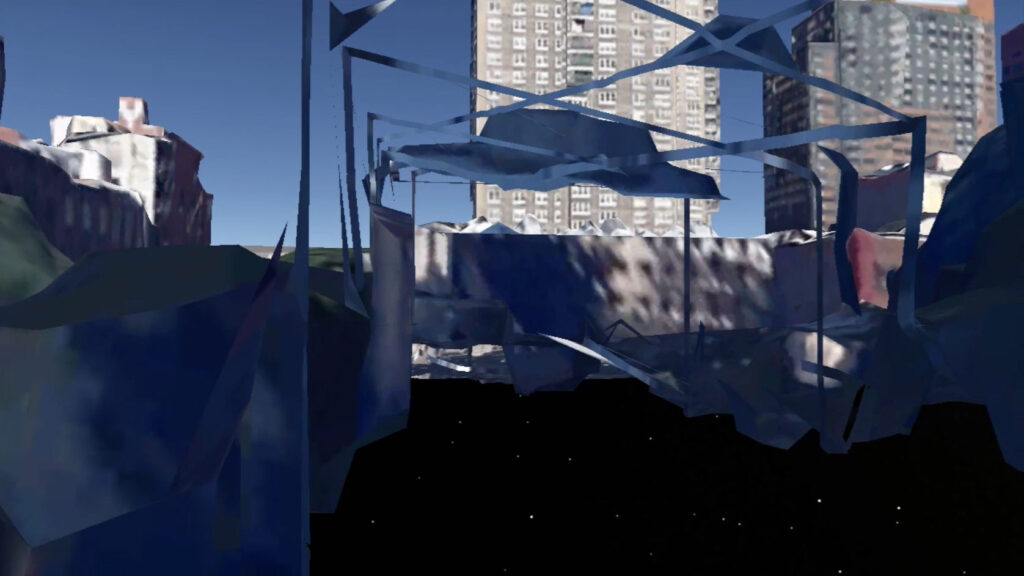
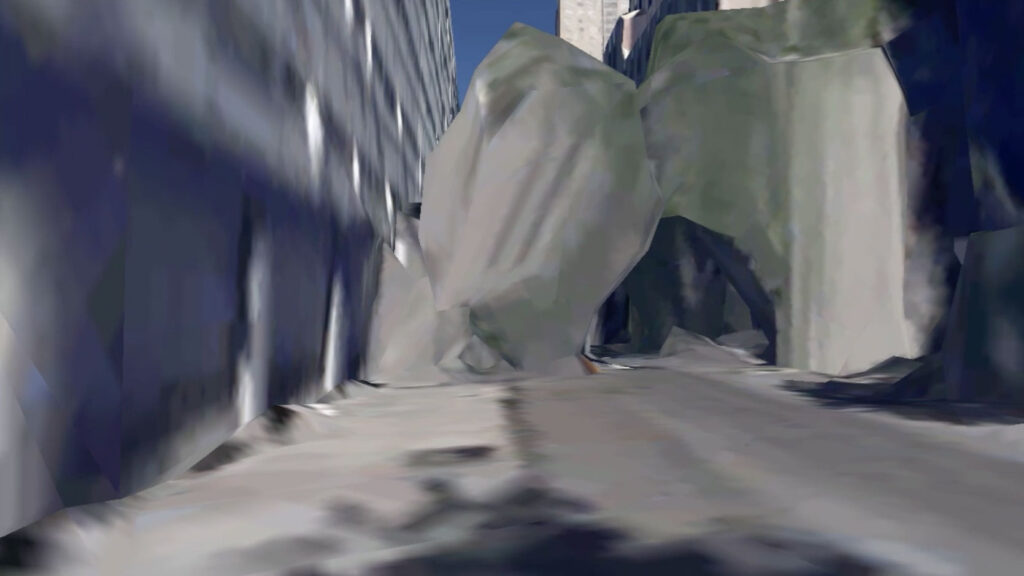
40 45′ 26.86″N I 73 57’36.15″ W
two walks,
one in berlin, the other in new york, consist of the retranscription of a documentary stroll.
marcus kaiser chooses the format of the video– image and sound – to retransmit the topographic displacement in its own
temporality. like a photographer scouting for the preparation of a film, be it fictional or documentary, the artist documents the scene and uses the animated photographic recording as a tool for observation.
but these images do not belong to him. they are the property of google.
these two algorithmic excursions carried out not by bodies but by machines are performed in the virtual space called google earth. it is a software allowing a visualization of the earth from a superimposition of aerial photography, satellite images and geographic information system (gis) data. modeled in 3 dimensions, this virtual world is composed like a collage
– a patchwork – of images coming
from different temporalities, assembled little by little in the manner of a puzzle of which it would always miss pieces.
past, present and future are thus mingled in a space about which
it is difficult to determine whether it
is continuous or discontinuous. some
vacant parcels or gaps are filled with
strange, almost fuzzy graphics, or with monochrome flat areas.
this intricacy creates an uncanny feeling because the limit between reality and abstraction is thus canceled by the virtuality of an autonomous space visibly under construction. oscillating
between soundscape and musical
language, the four-handed soundtrack by marcus kaiser and jens lohwieser ends up encouraging the impression of disturbing strangeness by circulating in a spectral setting, even a landscape of war strewn with ruins, thus ironically modifying the initial goal of this computer program signed google: giving an accurate 3d-representation of the globe.
Clara Pacquet
52 33‘ 09.86‘‘ N I 13 26‘ 55.16‘‘ E
hd 8.14 min, loop, 2015
music/sound: jens lohwieser & marcus kaiser
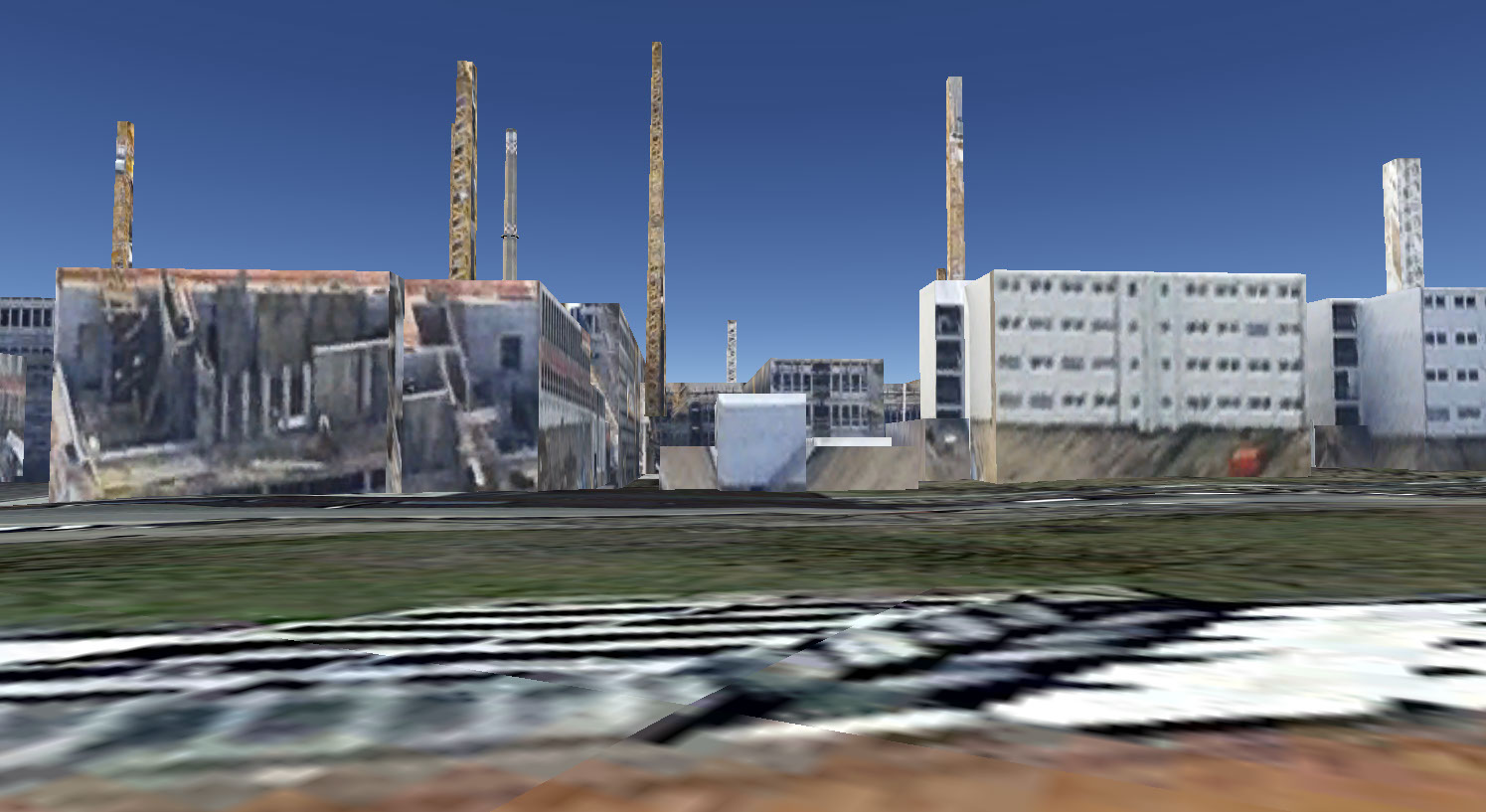
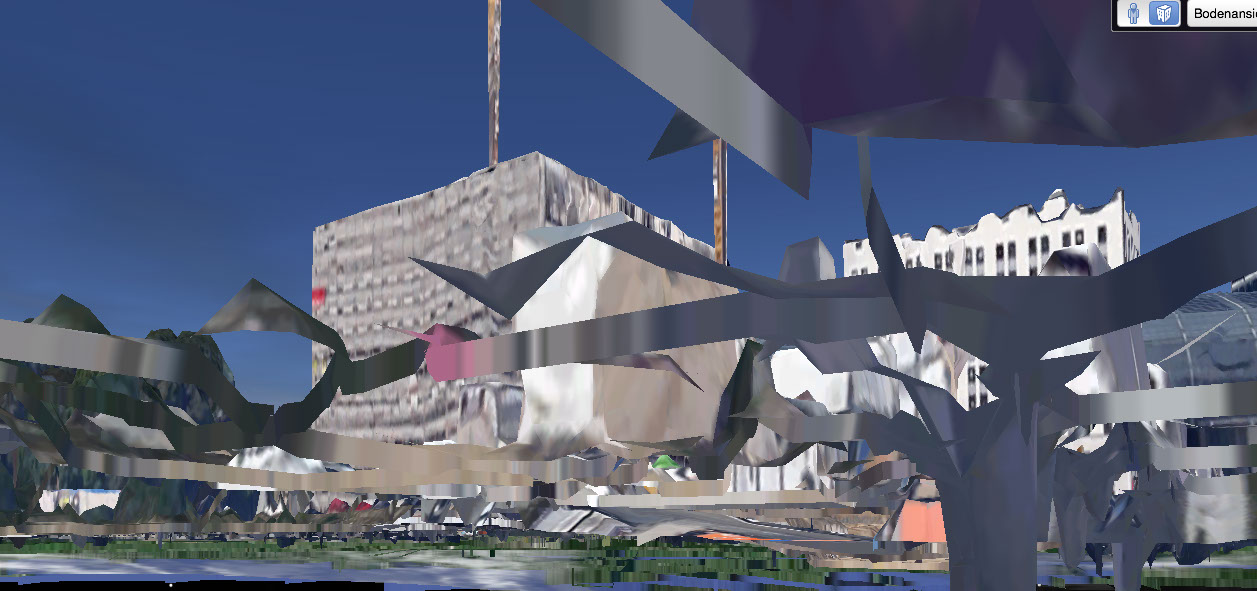
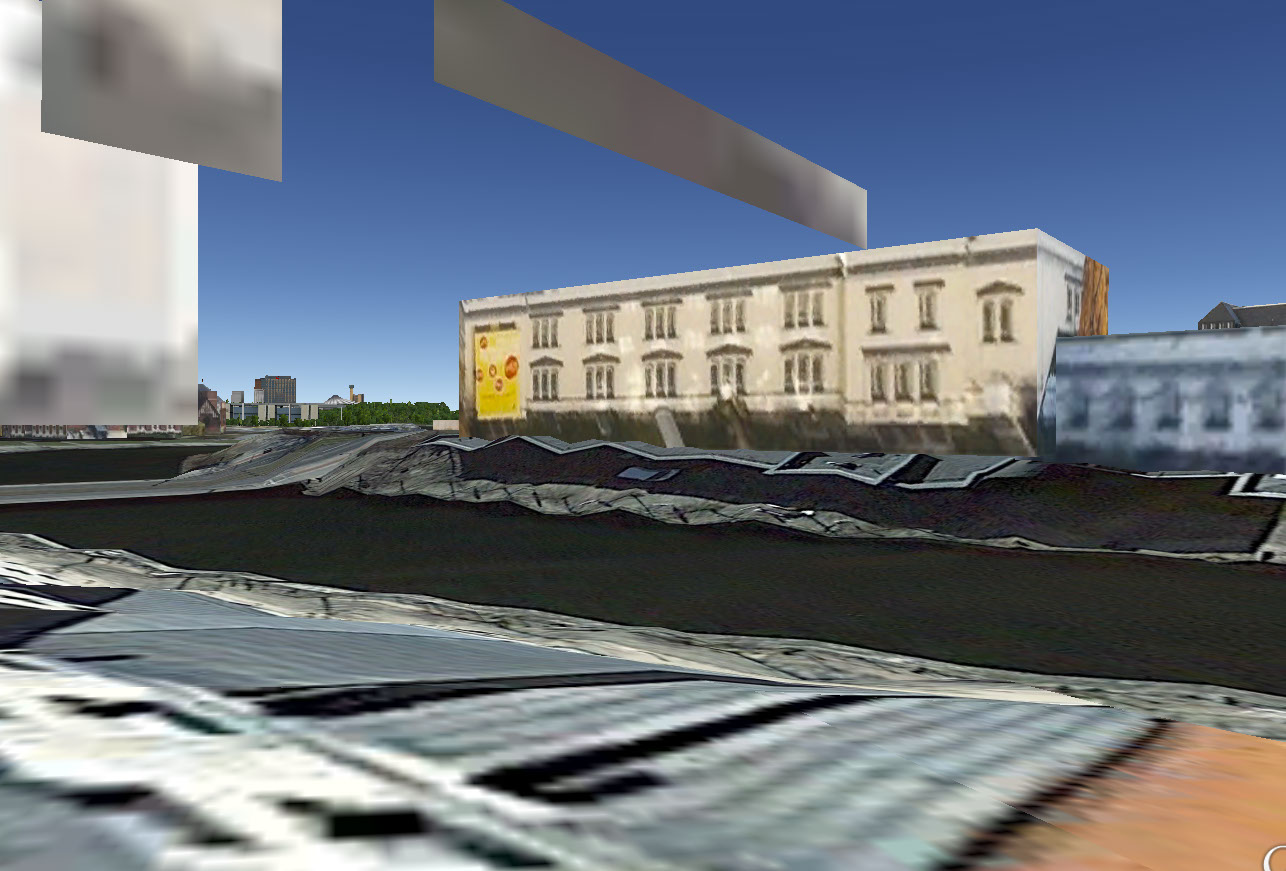
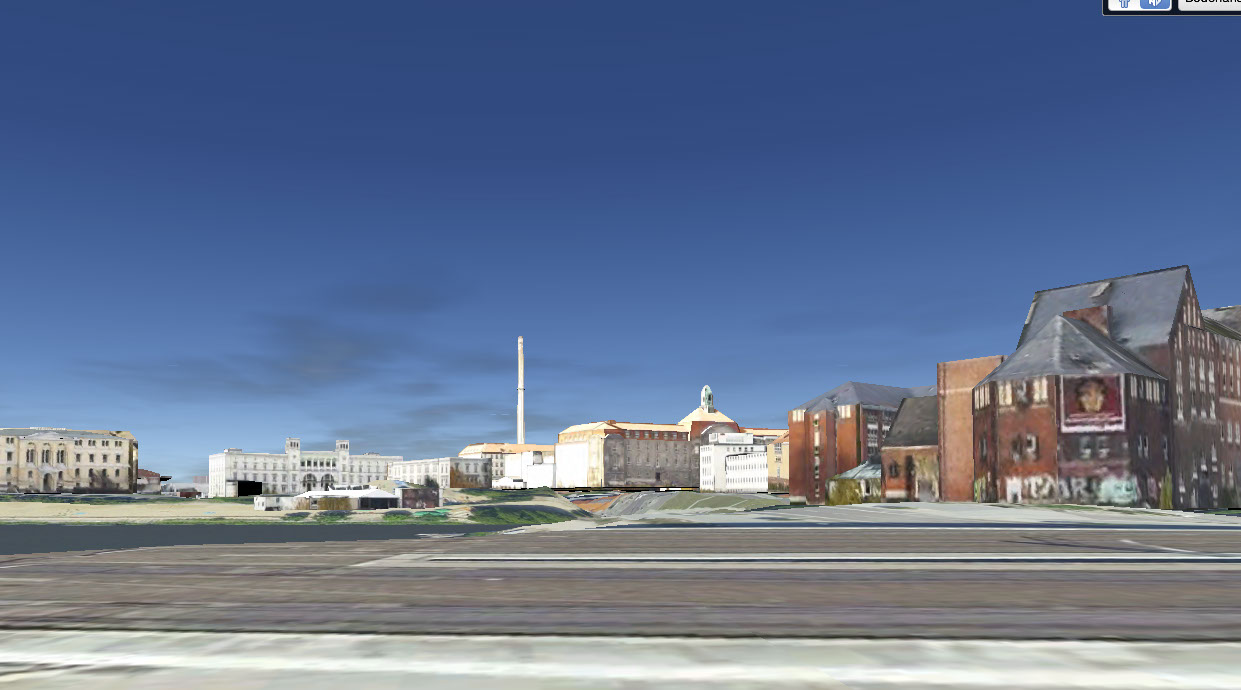
In my virtual walks through Berlin and New York using Google Earth, I expand the image-theoretical investigations of my earlier works to include an algorithmic dimension. Whereas in the ‘optical hut’ and the ‘wall views’ the physical body and the analogue camera still mediated between space and image, machines now take over the strolling and observing. For me, this shift is less a break than a logical continuation of the question of the conditions of visibility and perception.
The images that are created in the process do not belong to me – they are the property of Google. This foreignness of the material reveals an essential aspect of contemporary image production: we move in prefabricated, algorithmically composed image worlds whose authorship and materiality often remain hidden. The gaps, glitches and temporal distortions in the Google Earth visualisation become productive moments of irritation for me – they reveal the constructed nature and fragmentation of the seemingly seamless digital space.
In this work, I see connections to Guy Debord’s concept of psychogeography, which understands aimless wandering as a method of experiencing the city. My algorithmic excursions continue this practice in virtual space, with the machine replacing the strolling body and producing new forms of the uncanny and surprising. At the same time, I draw on Maurice Merleau-Ponty’s phenomenological considerations: in digital space, too, the question arises of how perception is constituted and what role mediation through media plays in this.
The video works make it clear that virtual space is no less real or experiential than analogue space – it simply follows different laws. The collage of images from different times, the temporal shifts and the visible breaks in construction become a mirror of our contemporary experience of space, which is increasingly shaped by algorithmic systems. In this sense, the digital walks continue my exploration of difference, boundaries and the creation of images in a new medium.
Marcus Kaiser, 2023